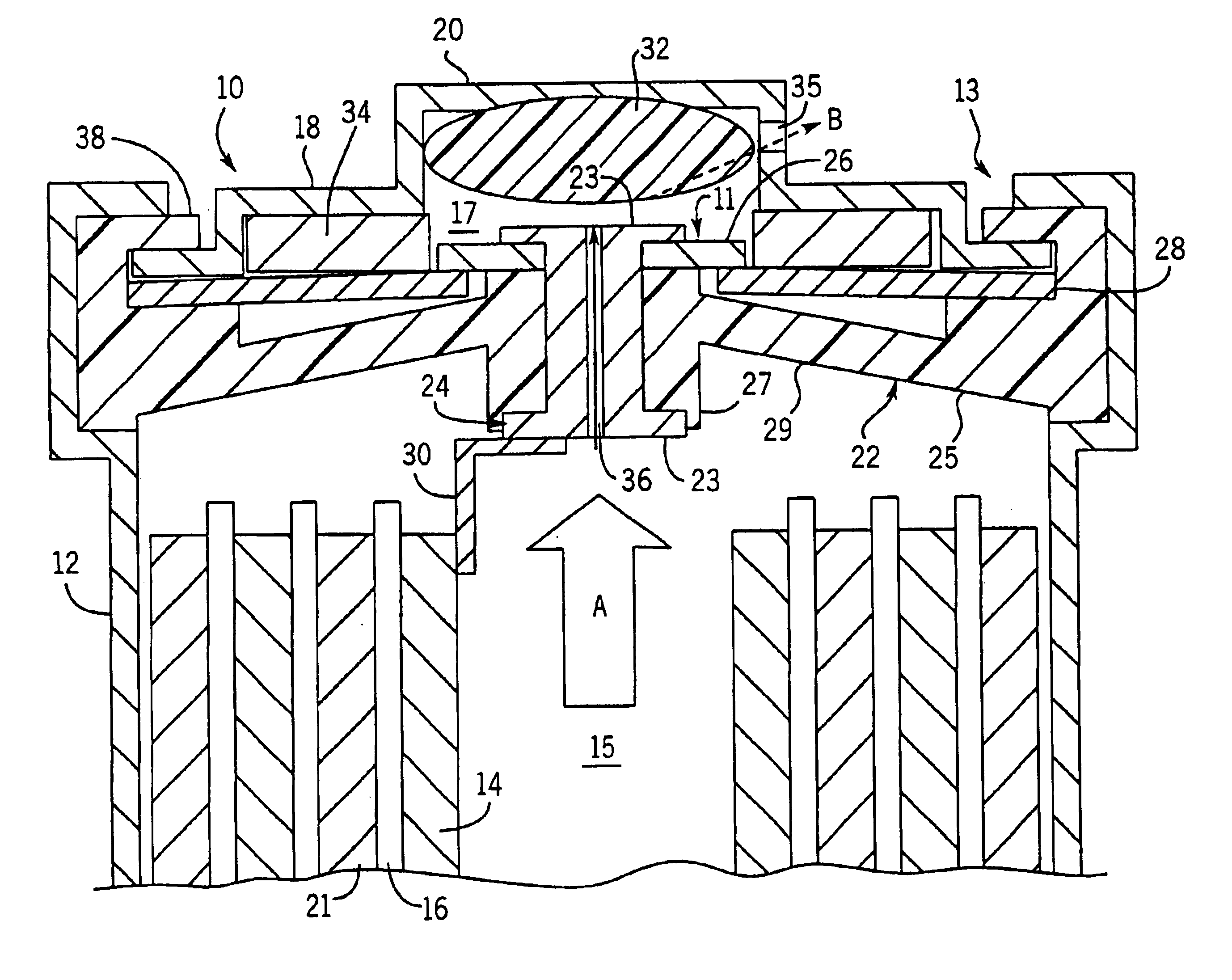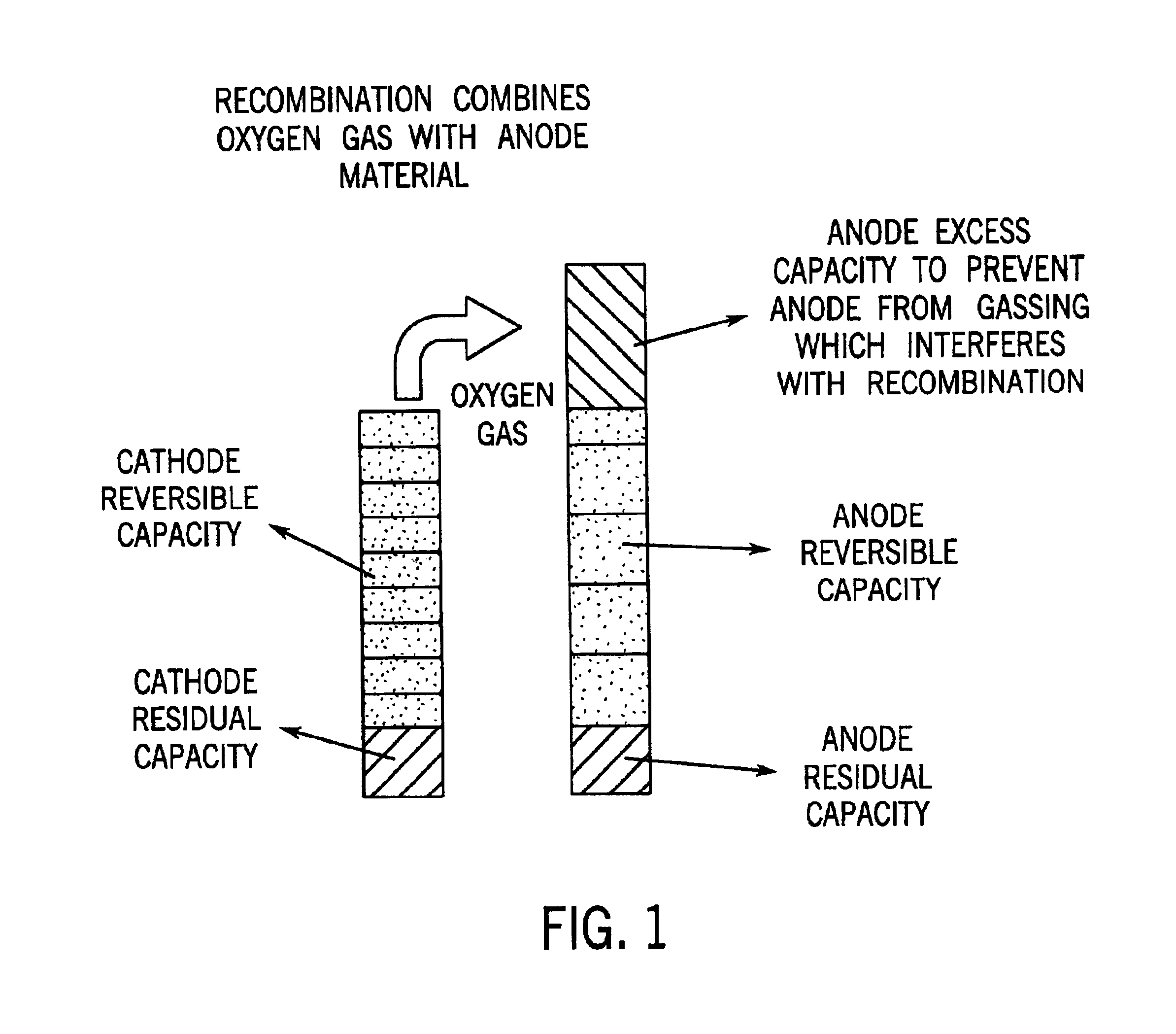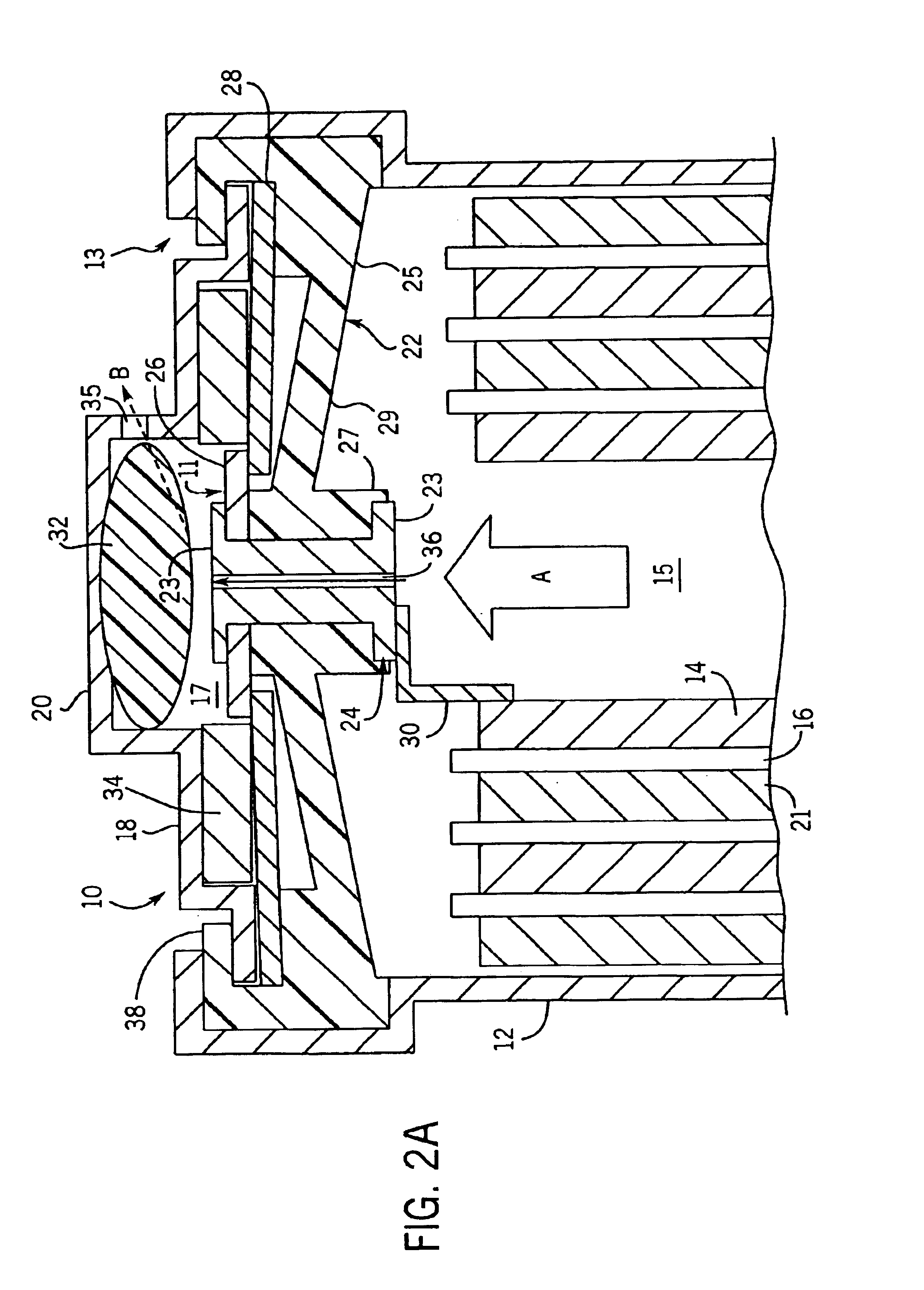Method and apparatus for regulating charging of electrochemical cells
a technology of electrochemical cells and charging methods, applied in the field of nickel rechargeable cells, can solve the problems of affecting the ability to charge nickel rechargeable cells, the rate of pressure change is several orders of magnitude faster than the rate, and achieves the effect of preventing over-pressurization of the cell
- Summary
- Abstract
- Description
- Claims
- Application Information
AI Technical Summary
Benefits of technology
Problems solved by technology
Method used
Image
Examples
examples
For a nickel metal hydride cell to be charged in 15 minutes or less, the preferred constant charging voltage is about 1.6V to 1.65V for a AA cell with 30-40 mOhm internal resistance determined by voltage difference between cell OCV cell voltage at 6 seconds interval at 10 amperes current. For cell with lower internal resistance (C-size cells, for example, having internal resistance of 10-20 mOhms), charging voltage lower than 1.6V but higher than 1.5V can be applied. The inventors have determined empirically that constant voltage charging is preferred when the ambient temperature is above freezing while constant current charging is preferred when the ambient temperature is below freezing.
Commercial AA and AAA nickel metal hydride cells containing a pressure-responsive switch in the end cap assembly were fully charged in 15 to 30 minutes and charging was terminated when the pressure-responsive switched was biased into the high pressure condition. The pressure signal was consistent an...
PUM
 Login to View More
Login to View More Abstract
Description
Claims
Application Information
 Login to View More
Login to View More - R&D
- Intellectual Property
- Life Sciences
- Materials
- Tech Scout
- Unparalleled Data Quality
- Higher Quality Content
- 60% Fewer Hallucinations
Browse by: Latest US Patents, China's latest patents, Technical Efficacy Thesaurus, Application Domain, Technology Topic, Popular Technical Reports.
© 2025 PatSnap. All rights reserved.Legal|Privacy policy|Modern Slavery Act Transparency Statement|Sitemap|About US| Contact US: help@patsnap.com



